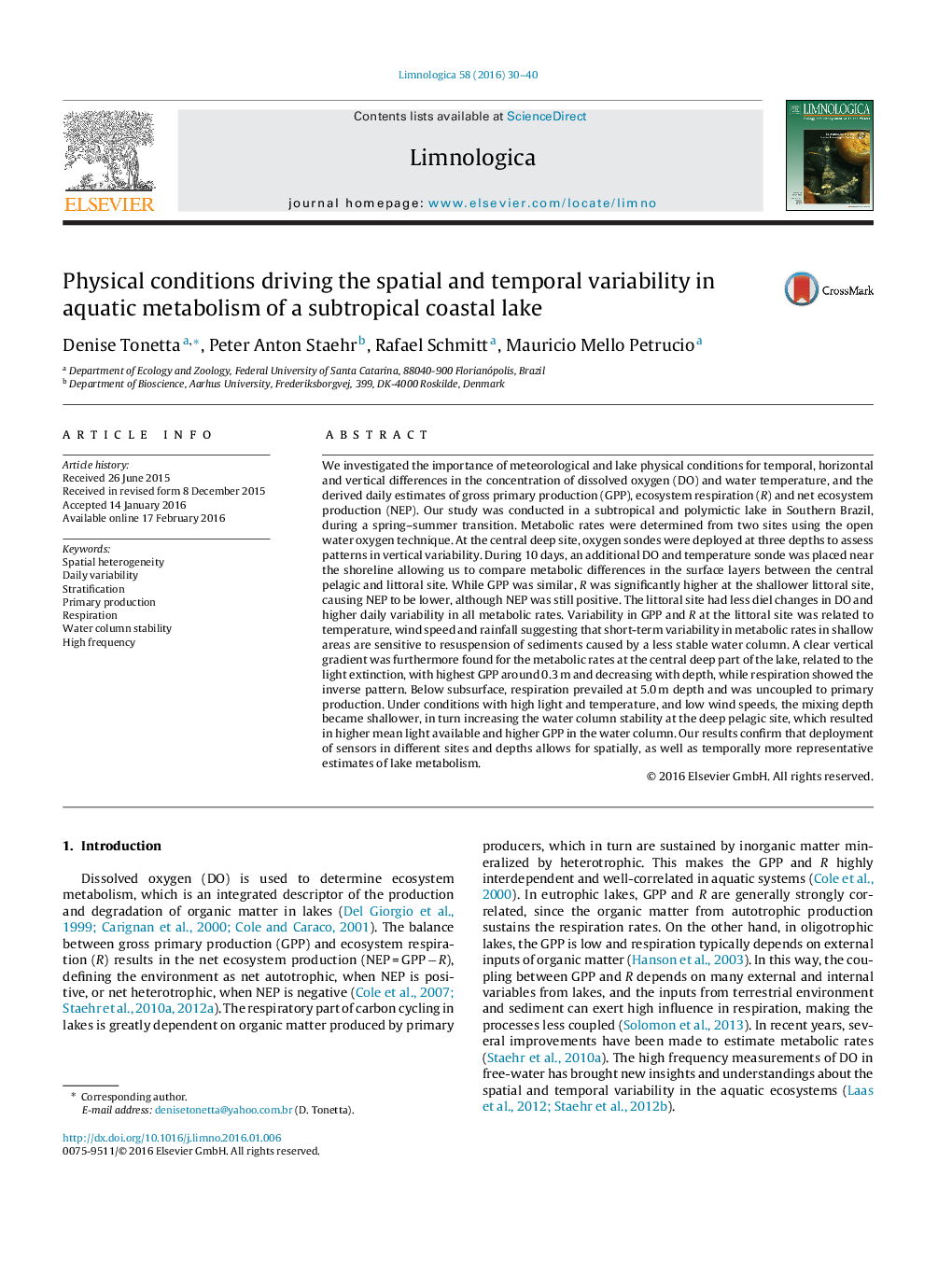| کد مقاله | کد نشریه | سال انتشار | مقاله انگلیسی | نسخه تمام متن |
|---|---|---|---|---|
| 4400336 | 1618564 | 2016 | 11 صفحه PDF | دانلود رایگان |
We investigated the importance of meteorological and lake physical conditions for temporal, horizontal and vertical differences in the concentration of dissolved oxygen (DO) and water temperature, and the derived daily estimates of gross primary production (GPP), ecosystem respiration (R) and net ecosystem production (NEP). Our study was conducted in a subtropical and polymictic lake in Southern Brazil, during a spring–summer transition. Metabolic rates were determined from two sites using the open water oxygen technique. At the central deep site, oxygen sondes were deployed at three depths to assess patterns in vertical variability. During 10 days, an additional DO and temperature sonde was placed near the shoreline allowing us to compare metabolic differences in the surface layers between the central pelagic and littoral site. While GPP was similar, R was significantly higher at the shallower littoral site, causing NEP to be lower, although NEP was still positive. The littoral site had less diel changes in DO and higher daily variability in all metabolic rates. Variability in GPP and R at the littoral site was related to temperature, wind speed and rainfall suggesting that short-term variability in metabolic rates in shallow areas are sensitive to resuspension of sediments caused by a less stable water column. A clear vertical gradient was furthermore found for the metabolic rates at the central deep part of the lake, related to the light extinction, with highest GPP around 0.3 m and decreasing with depth, while respiration showed the inverse pattern. Below subsurface, respiration prevailed at 5.0 m depth and was uncoupled to primary production. Under conditions with high light and temperature, and low wind speeds, the mixing depth became shallower, in turn increasing the water column stability at the deep pelagic site, which resulted in higher mean light available and higher GPP in the water column. Our results confirm that deployment of sensors in different sites and depths allows for spatially, as well as temporally more representative estimates of lake metabolism.
Journal: Limnologica - Ecology and Management of Inland Waters - Volume 58, May 2016, Pages 30–40
